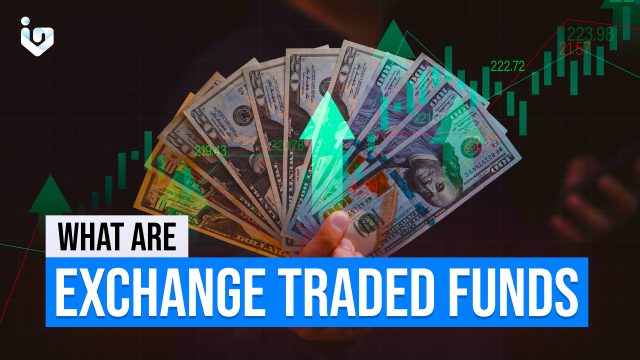Exchange-traded funds, or ETFs, are a type of investment that combines the features of stocks and mutual funds. ETFs are collections of securities, such as stocks, bonds, commodities, or currencies, that track the performance of an underlying index, sector, or theme. They trade on stock exchanges, like individual stocks, and can be bought and sold throughout the day at market prices. They also offer investors a convenient and cost-effective way to diversify their portfolio and gain exposure to various markets and strategies.
How do ETFs work?
ETFs are created and managed by fund providers, such as Vanguard, BlackRock, or State Street. These providers create ETFs by pooling money from investors and buying the securities that make up the ETF. The providers then issue shares of the ETF to the investors, who can sell them to other investors on the secondary market. The number of shares of an ETF is not fixed, but can change depending on the supply and demand. If more investors want to buy an ETF than sell it, the fund provider can create more shares by buying more securities. Conversely, if more investors want to sell an ETF than buy it, the fund provider can redeem shares by selling securities.
The price of an ETF is determined by the market forces of supply and demand, as well as by the value of its underlying securities. The value of the underlying securities is reflected by the net asset value (NAV) of the ETF, which is calculated by dividing the total value of the securities in the ETF by the number of shares outstanding. The NAV of an ETF is updated throughout the day, as the prices of the securities change. The market price of an ETF may differ from its NAV, depending on the trading volume, liquidity, and market conditions. This difference is called the premium or discount of the ETF. Ideally, the market price and the NAV of an ETF should be close to each other, to ensure fair and efficient trading.
What are the benefits of ETFs?
ETFs offer several advantages to investors, such as:
Diversification
ETFs allow investors to access a wide range of securities, markets, and strategies with a single purchase. This reduces the risk of investing in individual securities, as the performance of the ETF is not dependent on the performance of any single security. ETFs also enable investors to diversify across different asset classes, such as stocks, bonds, commodities, or currencies, and across different regions, sectors, or themes, such as emerging markets, technology, or environmental, social, and governance (ESG) factors.
Cost-efficiency
ETFs typically have lower fees and expenses than mutual funds, as they do not have active managers who charge management fees or incur trading costs. They have lower tax implications than mutual funds, as they do not distribute capital gains to shareholders, unless they sell their shares. They only incur brokerage commissions when they are bought and sold, which can be minimized by using low-cost brokers or platforms.
Flexibility
ETFs can be traded at any time during the day unlike mutual funds. They also offer investors the flexibility to use various trading strategies, such as limit orders, stop orders, margin trading, or short selling, which are not available for mutual funds. ETFs also have the flexibility to be customized according to the investor’s preferences, such as by using exchange-traded notes (ETNs), which are debt instruments that track the performance of an index or a commodity, or by using inverse or leveraged ETFs, which amplify the returns or losses of an index or a sector by using derivatives or borrowed funds.
What are the risks of ETFs?
ETFs also have some drawbacks and risks that investors should be aware of, such as:
Liquidity risk
ETFs may face liquidity issues, especially for those that track niche or illiquid markets or sectors, such as emerging markets, commodities, or currencies. Liquidity refers to the ease of buying and selling an asset without affecting its price. If an ETF has low liquidity, it may have a large bid-ask spread, which is the difference between the highest price that a buyer is willing to pay and the lowest price that a seller is willing to accept. A large bid-ask spread can increase the trading costs and reduce the returns of the ETF. Investors should check the trading volume and the bid-ask spread of an ETF before buying or selling it.
Market risk
ETFs are subject to the same market risks as their underlying securities, such as volatility, inflation, interest rate changes, or geopolitical events. These risks can affect the prices and the returns of the ETFs, regardless of their diversification or cost-efficiency. Investors should be aware of the market conditions and the potential impacts on their ETFs, and adjust their portfolio allocation and strategy accordingly.
Conclusion
ETFs are a popular and versatile type of investment that offer investors a convenient and cost-effective way to diversify their portfolio and gain exposure to various markets and strategies. ETFs have several benefits, such as diversification, cost-efficiency, and flexibility, but they also have some drawbacks and risks, such as tracking error, liquidity risk, and market risk. Investors should understand the features, benefits, and risks of ETFs, and compare different ETFs before choosing one that suits their goals and risk tolerance.

